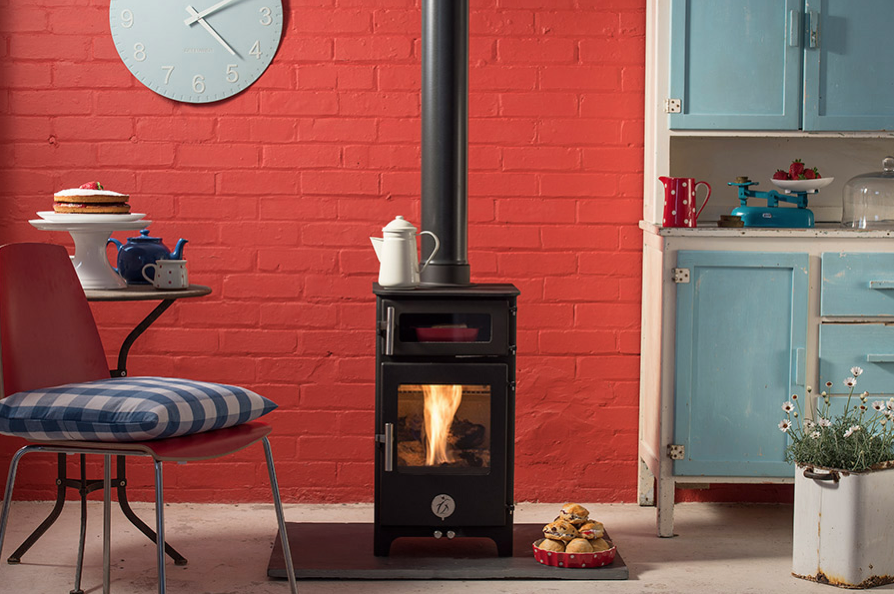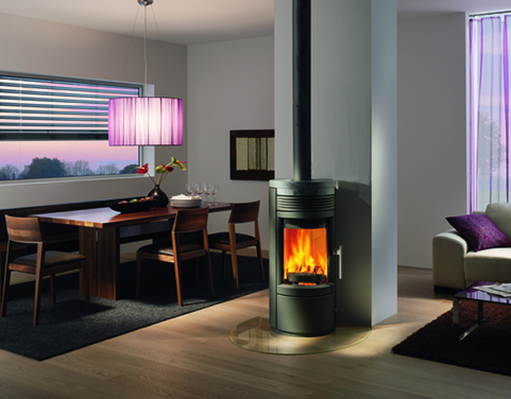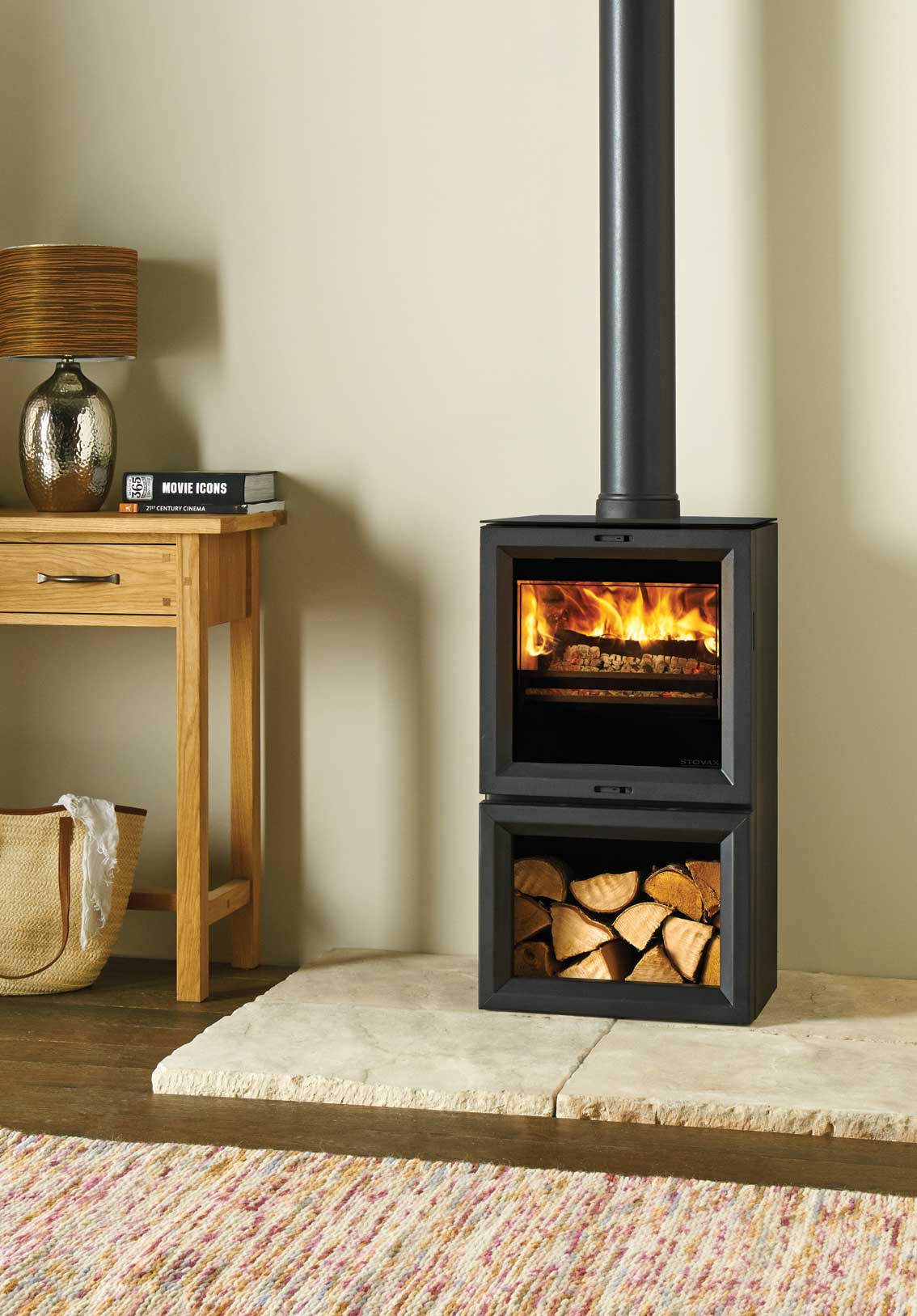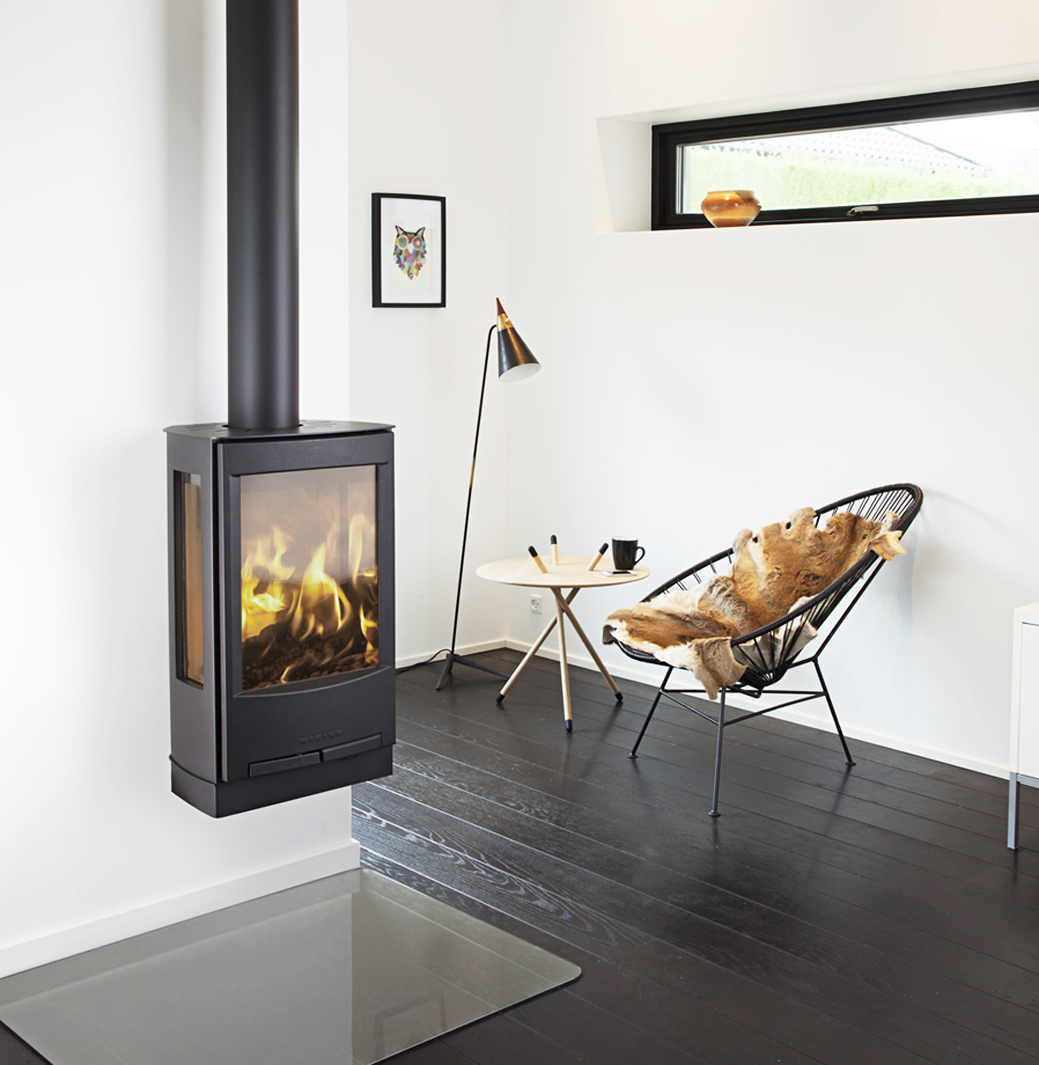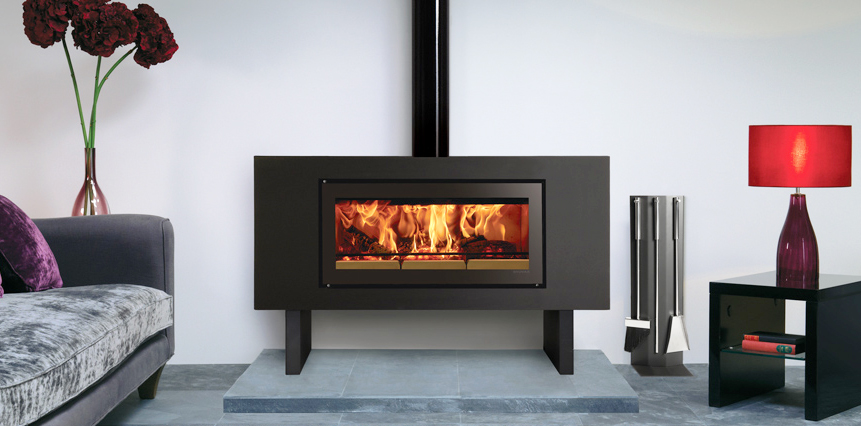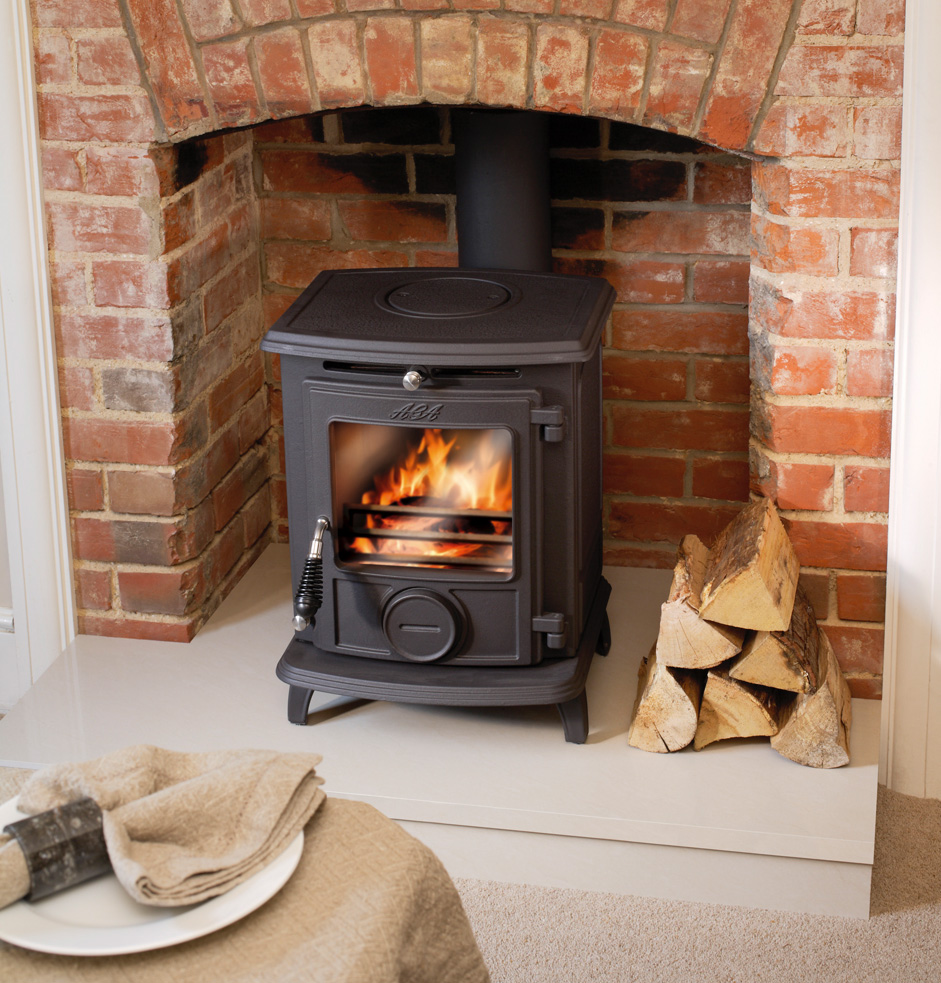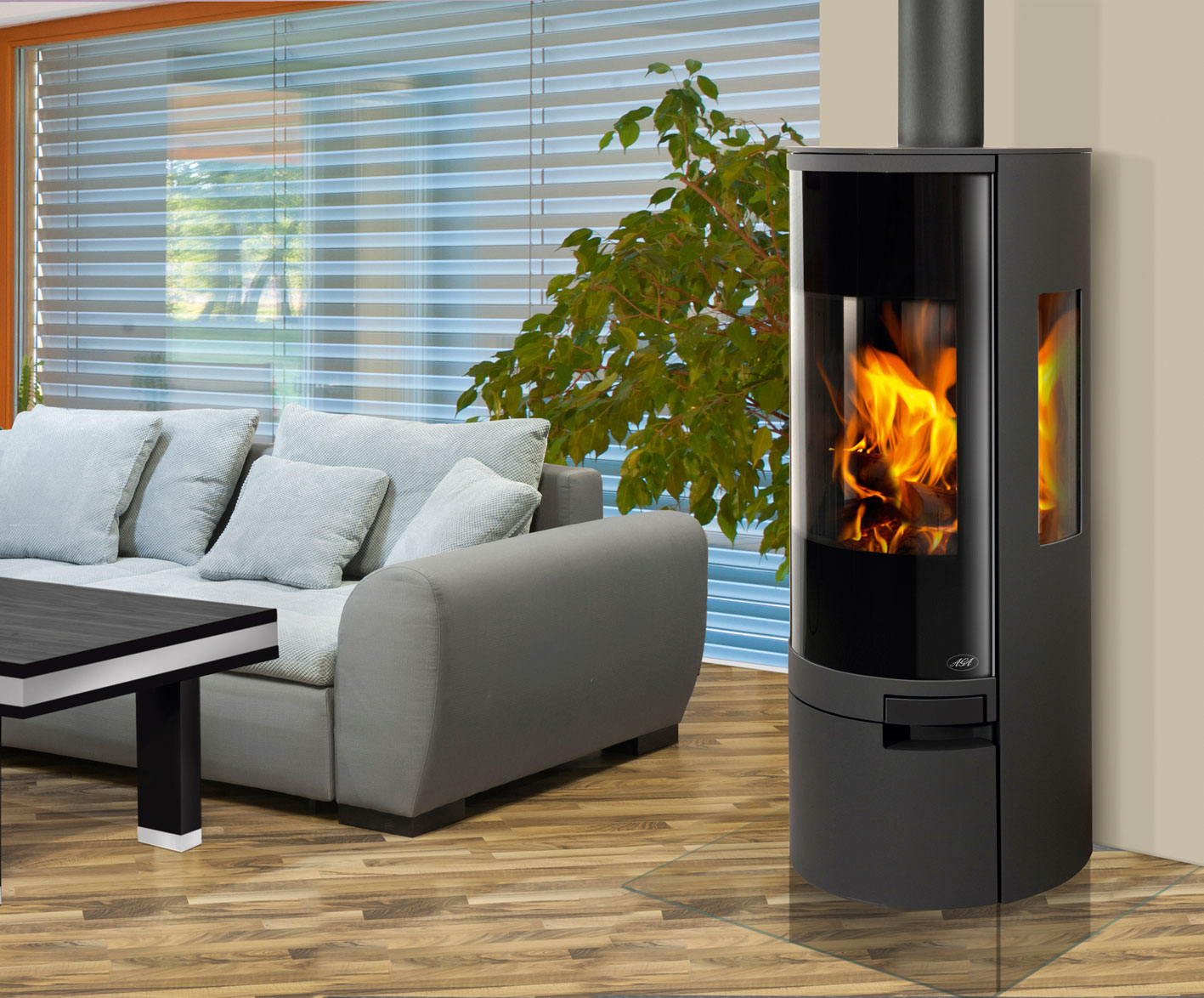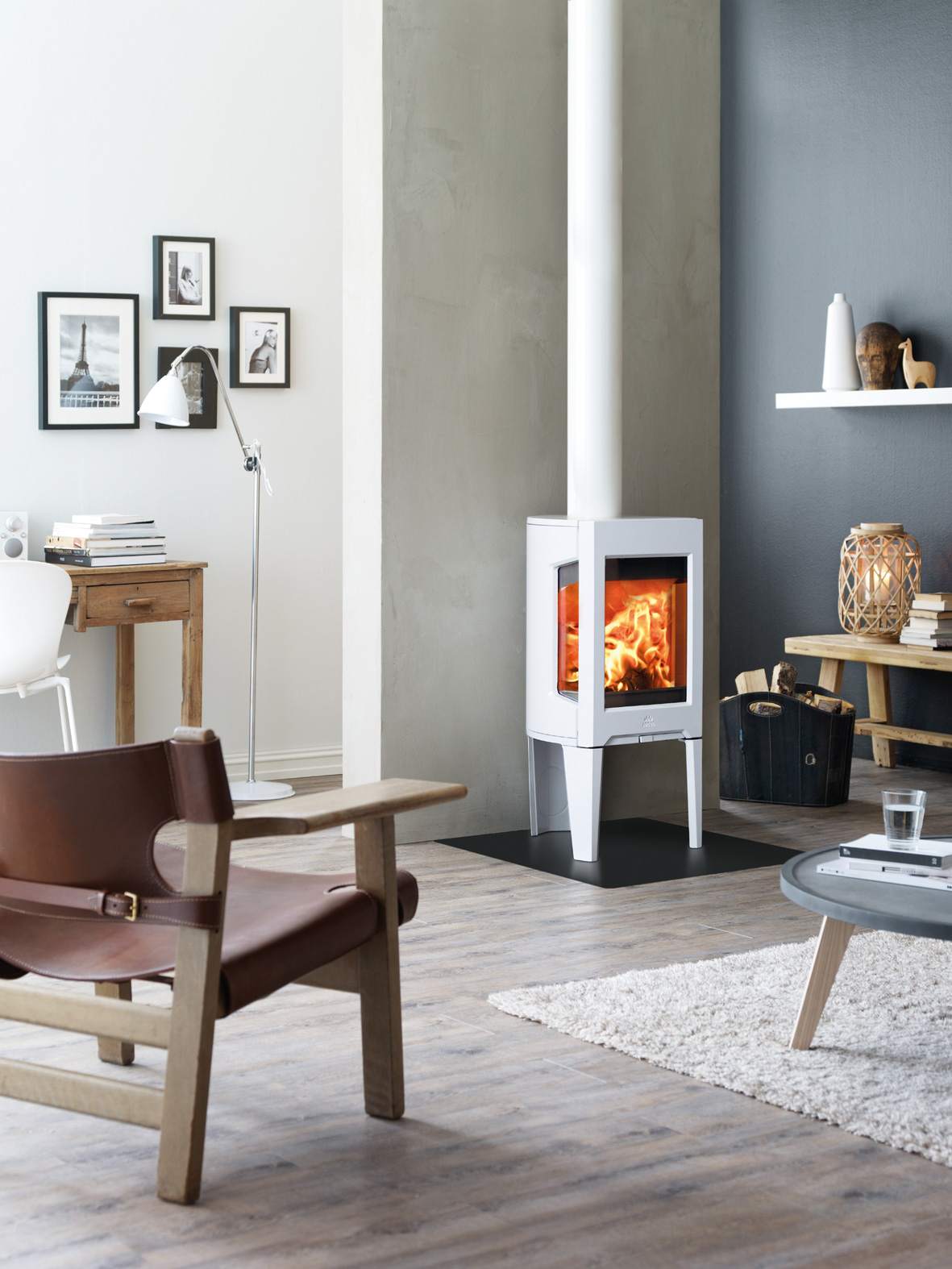What about the fuel?
Beware of buying kiln-dried wood that has been trucked in from far away, as this increases the carbon footprint of the fuel. The greenest fuel is local wood that you have seasoned yourself over one or two summers. Burning green wood reduces the efficiency of your fire and causes greater pollution, so is to be avoided. Scrap wood offcuts like pallets can also be used, but avoid burning mdf, painted or varnished wood as this can release pollution into the atmosphere.
Do they cause pollution and health problems?
Science says pretty unequivocably that yes, they do because stoves emit particulates which can get into our lungs. Wood may be a sustainable material but burning it, as happens when you burn anything, results in the production of also produces potentially dangerous particulates (the same reason we're all now being urged to get rid of our diesel vehicles, indeed are penalised for owning one).
Lower CO2 emissions are definitely better for the planet, but high small particulate emissions are far worse for people, so the two things need to be held in balance. Mostly to blame for particulate emissions are old-fashioned open fires and older log burners (ie those made more than five years ago), which may release up to 100mg of particulates per cubic metre of air. Some argue, however, if you live in a big city you probably aren't going to be that precious about potential particulate emissions from a stove, since you'll be exposing yourself to air that's far more polluted every time you go outside...
The advice for users as of December 2020 was once you've filled and lit your stove, do not open the door again during the session you're using it. Repeated opening results in particulates spilling into your room and you should therefore minimise that risk by keeping the door closed.
That said, particulates cause health issues for young children and people with heart conditions or breathing problems such as COPD or asthma.
Many newer designs produce as little as 14 micrograms of small particulates per cubic metre of air, which is well within what is considered by the US Environmental Protection Agency to be non- hazardous to human health (up to 40mcg per cubic metre). One way of ensuring that an appliance is particularly low on particulate emissions is to select one that is approved by Defra for use in smoke control areas, or that meets the Norwegian standard NS 3058 or US Environmental Protection Agency Methods 28 and 5G.
What fitting do they need?
Log burners must be fitted by a qualified company as there are important Building Regulations requirements about ventilation, hearths and flues to be followed. Most products will need a chimney which may have to be lined or replaced if it is not in good condition, or a flue.
Are they difficult to use?
Log burners do of course have one big requirement – you have to keep putting logs into them, and at some point (usually around once a week) you need to take out the resulting ash. Stoves which are classed as 'ntermittent operation'may need refuelling every three-quarters of an hour to maintain heat output, while the slightly inaptly named 'continuous operation stoves' still need refuelling every hour and a half or so, but can be kept going on a low burn for up to 10 hours so they don’t go out overnight. You will need your chimney swept at least once a year.
How much do they cost to run?
If you have a huge garden, run a carpentry workshop with lots of offcuts or live near a friendly farmer, the wood can be free – but you will need to have the space to season it somewhere dry for up to two years.
If you have to buy logs, Which? notes that freshly-cut logs cost around £80 per cubic metre, (but have a moisture content of up to 90 per cent so would only produce around 1kWh per kg if burned straight away); ready-seasoned wood costs around up to £123 per cubic metre (40 per cent moisture and a heat output of 3kWh per kg), and kiln-dried wood is up to £145 per cubic metre (20% moisture and a heat output of 4.5kWh per kg). A modest log burner used for a couple of hours a night during the winter would use around a cubic metre per season, while one in constant use would get through up to six cubic metres.
Working out the cost per kW hour of energy is fiendishly complex, mainly because logs tend to be sold by volume rather than by weight, but retailers Stovax, Perge and Chesney’s have all come to the conclusion that it is around 4p per kWH.
Price comparison website ConfusedAboutEnergy.com claims that it has used recent Department of Energy figures to calculate the cost at nearer 7.1p per kWH for dried logs, compared with 4.8p per kWH for gas, 5.6p for oil, 6.3p for LPG and15.5p per kWH for electricity.
Taking into account that it costs between £1,350 and £3,750 to install a new wood-burning into a room that already has a functional chimney and you can see that it is unlikely to make you rich overnight; although it will give you the warm glow of lowering your carbon footprint as well as having toasty toes in front of the TV.
Manufacturers/stockists
Chilli Penguin - fires designed and made in Wales
Firebelly Stoves - designed and made in the UK
Aga - British brand
Stovax - British brand
Charnwood - British manufacturer, based on Isle of Wight
Bronpi - Spanish manufacturer - available in the UK
Hwam - Swedish manufacturer - available in the UK
Rika - Austrian manufacturer - available in the UK
Nordpeis - Norwegian brand, available in the UK
